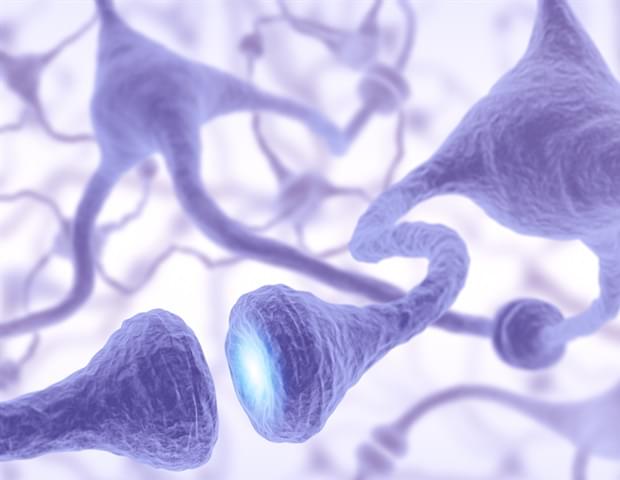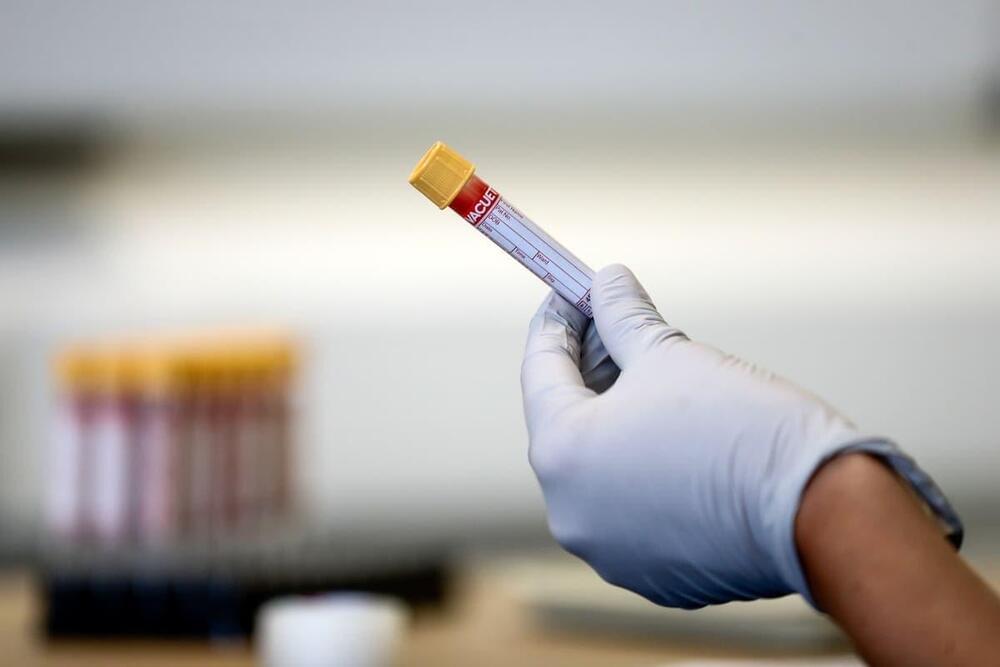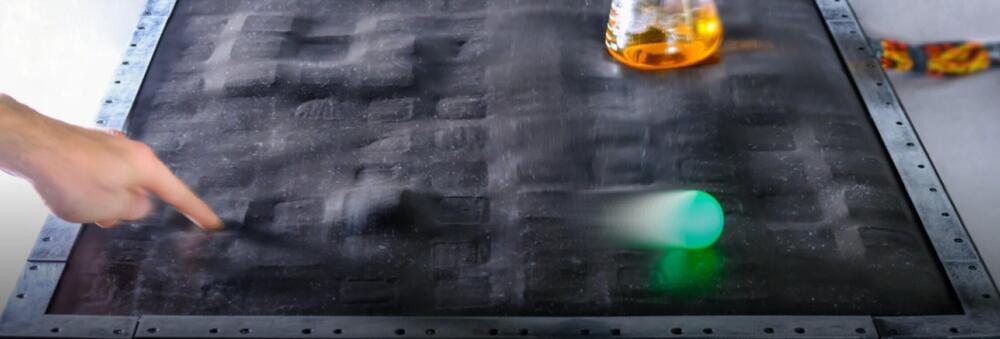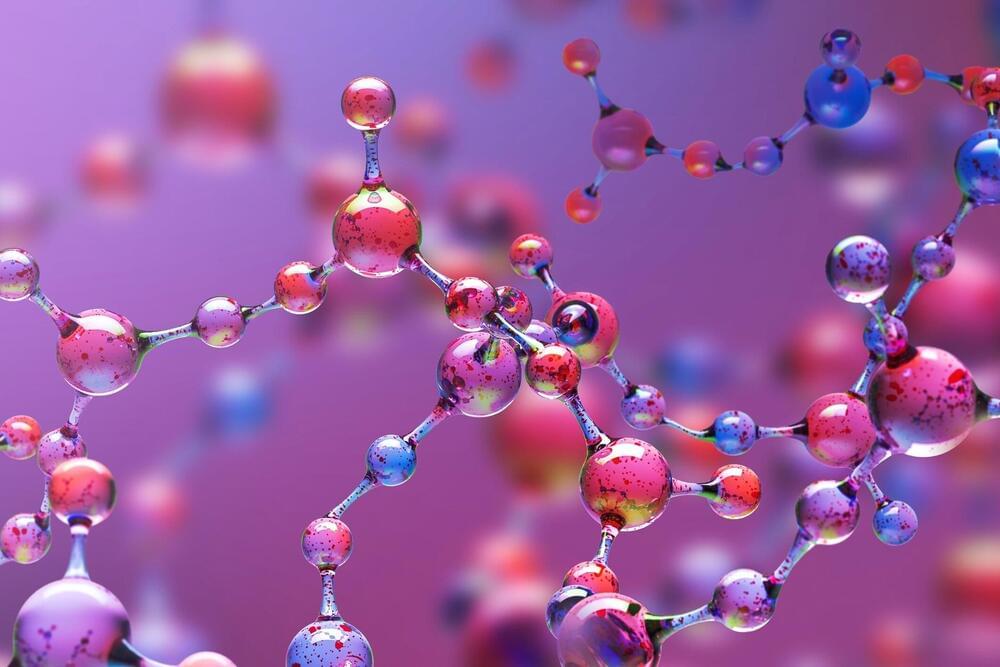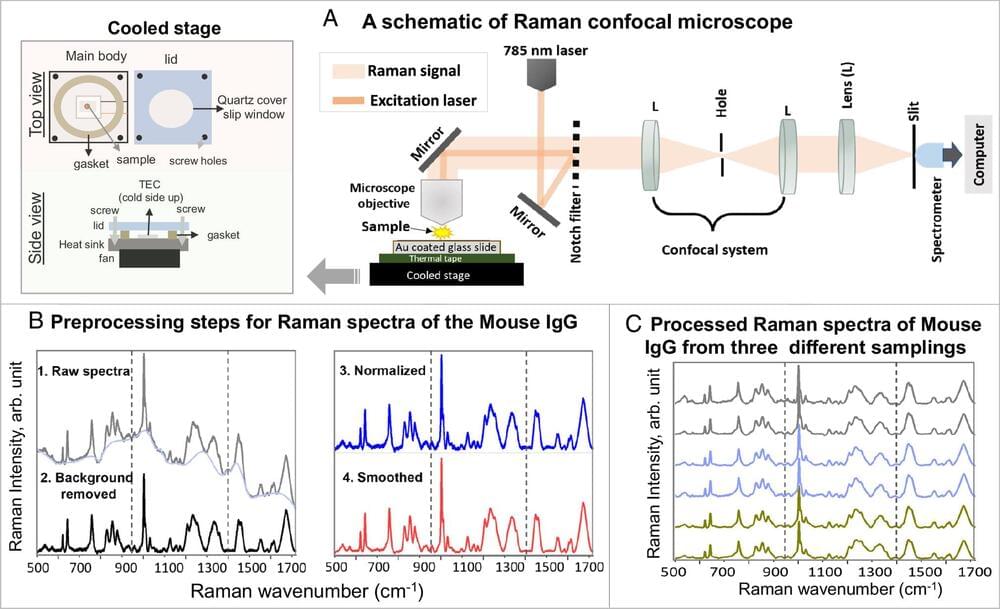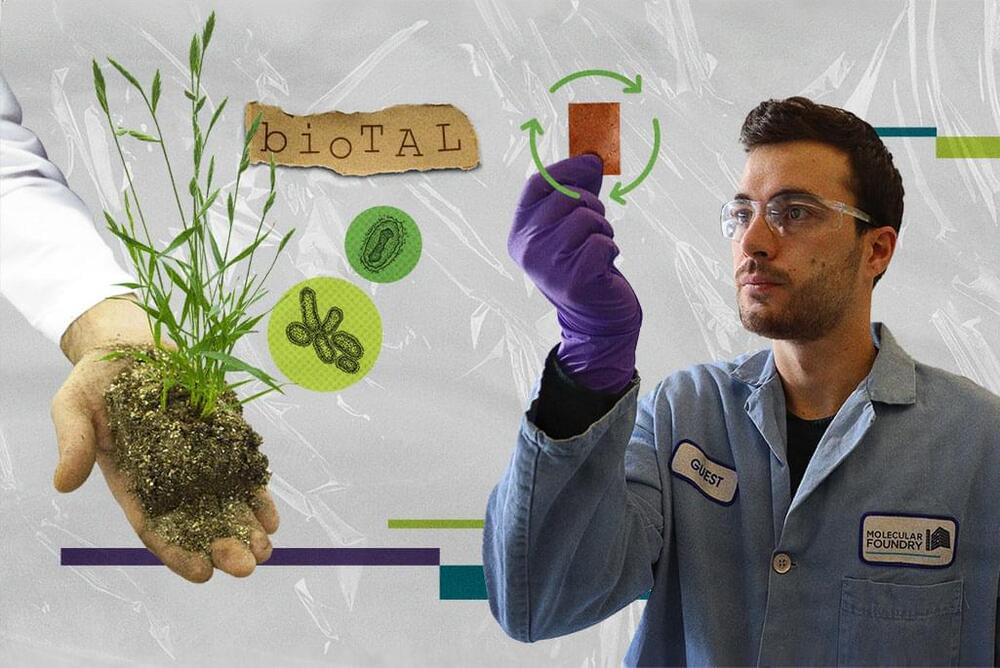Serving the chemical, life science, and laboratory worlds.
Category: chemistry – Page 154
Using conventional testing techniques, it can be challenging—sometimes impossible—to detect harmful contaminants such as nano-plastics, air pollutants and microbes in living organisms and natural materials. These contaminants are sometimes found in such tiny quantities that tests are unable to reliably pick them up.
This may soon change, however. Emerging nanotechnology (based on a “twisted” state of light) promises to make it easier to identify the chemical composition of impurities and their geometrical shape in samples of air, liquid and live tissue.
An international team of scientists led by physicists at the University of Bath is contributing toward this technology, which may pave the way to new environmental monitoring methods and advanced medicines. Their work is published in the journal Advanced Materials.
Neurons are the cells that constitute neural circuits and use chemicals and electricity to receive and send messages that allow the body to do everything, including thinking, sensing, moving, and more. Neurons have a long fiber called an axon that sends information to the subsequent neurons. Information from axons is received by branch-like structures that fan out from the cell body, called dendrites.
Dendritic refinement is an important part of early postnatal brain development during which dendrites are tailored to make specific connections with appropriate axons. In a recently published paper, researchers present evidence showing how a mechanism within the neurons of a rodent involving the Golgi apparatus initiates dendritic refinement with the help of the neuronal activity received by a receptor of a neurotransmitter called N-methyl-D-aspartate-type glutamate receptor (NMDAR).
The paper was published in Cell Reports on July 28.
Science: In my opinion the main cause of aging is the accumulation of mutations in DNA 🧬 more than telomere size reduction or “toxin’s”. But the control of these “toxins” together with drug’s that simulate the restriction of calories and the transfusion of blood from young people to old people. And future drugs to make the telomeres grow again.
These four treatments together maybe can promote life extension. I am also enthusiastic in regenerative treatment with stem cells and “replace” old organs by new one’s growing in lab from stem cells. However I believe that immortality only when you make the enzymes “fix” in 100% the mutations caused by radicals.
High levels of toxic chemicals in the body, such as formaldehyde, which is best known as an embalming agent, have recently been found to be naturally made by cells and also to cause ageing.
Leading scientists from Cornell University, the University of Oxford, the University of Cambridge and Cancer Research UK are trying to understand what causes the body to overproduce formaldehyde.
It is hoped that drugs may be able to lower levels of it in the body and reverse the ageing process.
Recent developments in various domains have led to a growing interest in the potential of artificial intelligence to enhance our lives and environments. In particular, the application of artificial intelligence in the management of complex human diseases, such as cancer, has garnered significant attention. The evolution of artificial intelligence is thought to be influenced by multiple factors, including human intervention and environmental factors. Similarly, tumors, being heterogeneous and complex diseases, continue to evolve due to changes in the physical, chemical, and biological environment. Additionally, the concept of cellular intelligence within biological systems has been recognized as a potential attribute of biological entities. Therefore, it is plausible that the tumor intelligence present in cancer cells of affected individuals could undergo super-evolution due to changes in the pro-tumor environment. Thus, a comparative analysis of the evolution of artificial intelligence and super-complex tumor intelligence could yield valuable insights to develop better artificial intelligence-based tools for cancer management.
Tumor evolution refers to the changes that occur in a cancerous tumor over time as it grows and spreads (Hanahan and Weinberg, 2011; Lyssiotis and Kimmelman, 2017). These changes are the result of genetic mutations and changes in gene expression that can give rise to new subpopulations of cells within the tumor (Lyssiotis and Kimmelman, 2017; Balaparya and De, 2018). Over time, these subpopulations may accumulate subsequent mutations that confer enhanced survival and heightened proliferative capacity, thereby culminating in the emergence of a more formidable tumor exhibiting either heightened aggressiveness or treatment resistance (Balaparya and De, 2018; Gui and Bivona, 2022; Shin and Cho, 2023). Tumor evolution can have important implications for cancer diagnosis and treatment.
Imagine an iPad that’s more than just an iPad—with a surface that can morph and deform, allowing you to draw 3D designs, create haiku that jump out from the screen and even hold your partner’s hand from an ocean away.
That’s the vision of a team of engineers from the University of Colorado Boulder. In a new study, they’ve created a one-of-a-kind shape-shifting display that fits on a card table. The device is made from a 10-by-10 grid of soft robotic “muscles” that can sense outside pressure and pop up to create patterns. It’s precise enough to generate scrolling text and fast enough to shake a chemistry beaker filled with fluid.
It may also deliver something even rarer: the sense of touch in a digital age.
New chemistry, new enzymology. With a new method that merges the best of two worlds—the unique and complementary activities of enzymes and small-molecule photochemistry—researchers at UC Santa Barbara have opened the door to new catalytic reactions. Their synergistic method allows for new products and can streamline existing processes, in particular, the synthesis of non-canonical amino acids, which are important for therapeutic purposes.
“This method solves what in my opinion is one of the most important problems in our field: how to develop new catalytic reactions in a general sense that are new to both biology and chemistry,” said chemistry Professor Yang Yang, an author of a paper that appears in the journal Science. “On top of that, the process is stereoselective, meaning it can select for a preferred “shape” of the resulting amino acid.”
The synergistic photobiocatalytic method consists of two co-occurring catalytic reactions. The photochemical reaction generates a short-lived intermediate molecule that works with the reactive intermediate of the enzymatic process, resulting in the amino acid.
Raman spectroscopy—a chemical analysis method that shines monochromatic light onto a sample and records the scattered light that emerges—has caused frustration among biomedical researchers for more than half a century. Due to the heat generated by the light, live proteins are nearly destroyed during the optical measurements, leading to diminishing and non-reproducible results. As of recently, however, those frustrations may now be a thing of the past.
A group of researchers with the Institute for Quantum Sciences and Engineering at Texas A&M University and the Texas A&M Engineering Experiment Station (TEES) have developed a new technique that allows low-concentration and low-dose screenings of protein-to-ligand interactions in physiologically relevant conditions.
Titled thermostable-Raman-interaction-profiling (TRIP), this new approach is a paradigm-shifting answer to a long-standing problem that provides label-free, highly reproducible Raman spectroscopy measurements. The researchers published their findings in the Proceedings of the National Academy of Sciences.
Plastic waste is a problem. Most plastics can’t be recycled, and many use finite, polluting petrochemicals as the basic ingredients. But that’s changing. In a study published today in Nature Sustainability, researchers successfully engineered microbes to make biological alternatives for the starting ingredients in an infinitely recyclable plastic known as poly(diketoenamine), or PDK.
The finding comes from collaboration among experts at three facilities at the Department of Energy’s Lawrence Berkeley National Laboratory (Berkeley Lab): the Molecular Foundry, the Joint BioEnergy Institute (JBEI), and the Advanced Light Source.
“This is the first time that bioproducts have been integrated to make a PDK that is predominantly bio-based,” said Brett Helms, staff scientist at the Molecular Foundry who led the project. “And it’s the first time that you see a bio-advantage over using petrochemicals, both with respect to the material’s properties and the cost of producing it at scale.”
Exercise gives your brain a “bubble bath of neurochemicals,” says Wendy Suzuki, a professor of neural science.
Up next, Forensic accountant explains why fraud thrives on Wall Street.
► https://youtu.be/GHKyDYtKGEg.
Exercise can have surprisingly transformative impacts on the brain, according neuroscientist Wendy Suzuki. It has the power not only to boost mood and focus due to the increase in neurotransmitters like dopamine, serotonin, and noradrenaline, but also contributes to long-term brain health. Exercise stimulates the growth of new brain cells, particularly in the hippocampus, improving long-term memory and increasing its volume. Suzuki notes that you don’t have to become a marathon runner to obtain these benefits — even just 10 minutes of walking per day can have noticeable benefits. It just takes a bit of willpower and experimentation.
0:00 My exercise epiphany.
1:35 What is “runner’s high”?
2:40 The hippocampus & prefrontal cortex.
3:32 Neuroplasticity: It’s never too late to move your body.
Read the video transcript ► https://bigthink.com/series/the-big-think-interview/how-the-…escription.
About Wendy Suzuki:


